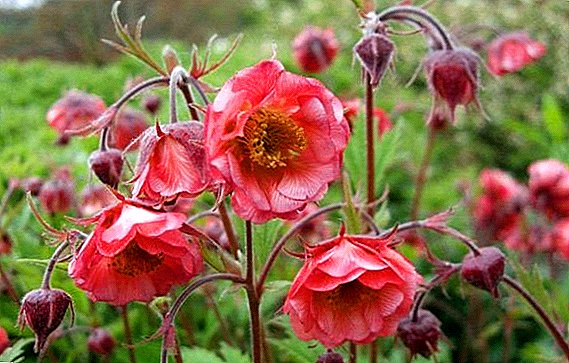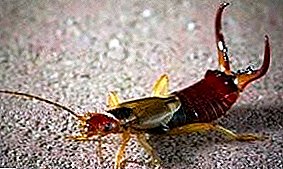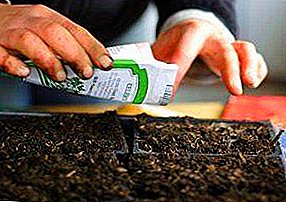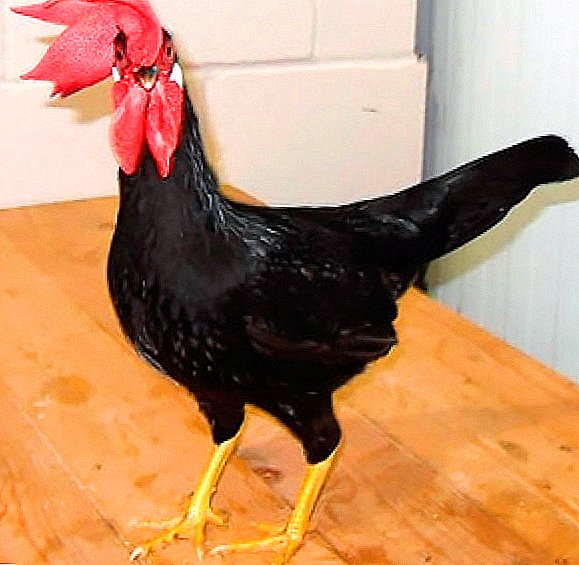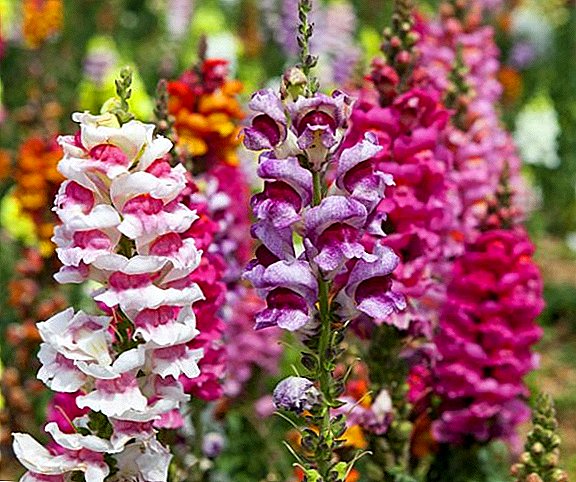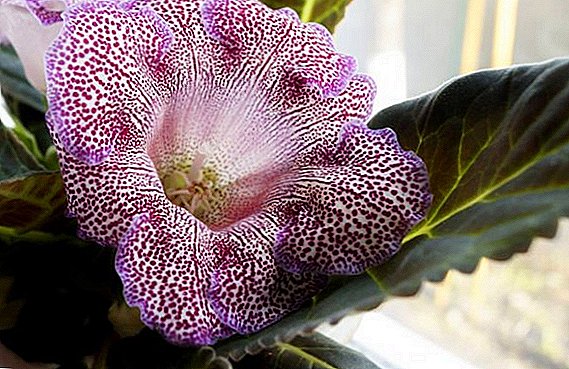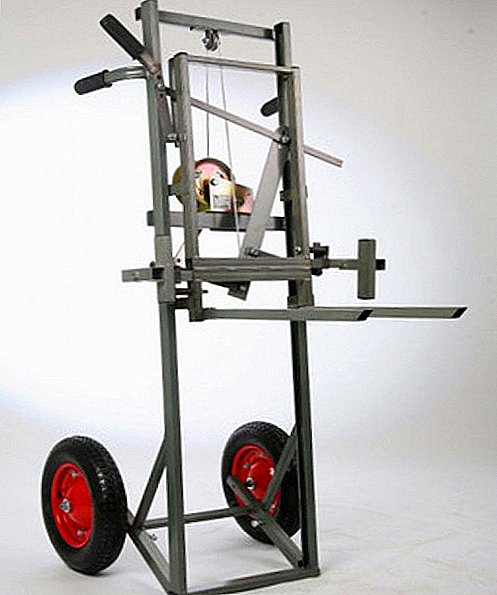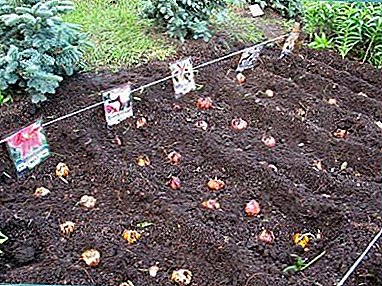
Lily - a perennial flower that grows in one place for at least five years.
In this regard, the selection of a place for planting and soil development should be given special attention, following all the recommendations of experienced flower growers. When and how to plant lilies, we will look at this article in detail.
How to choose a place?
 Lily is a light-loving plant, so planting it in a shady place is not recommended.
Lily is a light-loving plant, so planting it in a shady place is not recommended.
If you plant this flower under the trees or on a plot that is in the shade of buildings for more than half a day, you can not wait for a beautiful flowering.
When choosing a site you need to pay attention to the soil. You can not put the lily in a damp place, because the bulbs there will begin to rot.
Be especially careful that the place where the lilies are planted is not flooded with meltwater in spring.
The soil for planting should be loose and as breathable as possible. Before planting the site must be well dig and make humus, peat and mineral fertilizers in the ground.
TIP: If the area is acidic soil, it is necessary to add ash or lime.
When is it best to replant lilies?
 When to plant lilies? Plant lilies can be in the fall and spring.
When to plant lilies? Plant lilies can be in the fall and spring.
At the same time, the spring planting of lilies has both pluses and minuses. The positive point is that the bulbs do not freeze over the winter.
Spring planting promotes the survival of the flower and the formation of powerful roots.
At the same time, the lack of spring planting is the untimely appearance of sprouts from the purchased specimens. This happens because when selling bulbs are taken out of cold warehouses, and once in the heat, they quickly sprout.
But not always they can be planted at this time in the ground, because the weather does not allow. At the same time, the bulbs should be in the soil until the sprouts are above 10-15 cm.
Spring planting is also unfavorable in hot and dry weather. The bulb in such conditions can dry and not give a sprout.
Autumn planting is most acceptable for a flower. Produce it in late September. Before the onset of frost, the onion has time to take root, and the winter period passes for it safely. In the spring, as soon as warm weather sets in, sprouts appear from the ground, and the lily begins to develop and prepare for flowering.
Unfortunately, the autumn planting has one significant drawback - the scarcity of the range on offer. Sellers start selling onion bulbs in spring. Until autumn, it is sometimes impossible to save purchased bulbs.
Landing technology
 How to plant lilies correctly? For planting lilies prepare holes, approximately 30-40 cm in depth.
How to plant lilies correctly? For planting lilies prepare holes, approximately 30-40 cm in depth.
At the bottom lay a layer of gravel, then a layer of sand, sprinkle it on top with a small layer of soil.
From each other the wells should be located at a distance of 25-30 cm.
Before planting the bulbs are treated with a solution of potassium permanganate, then a fungicide. At the bottom of the fossa is laid onion, straightening the roots of its diameter.
Depth of planting depends on the size of the instance. Usually oriented to the height of the bulb, the height of the soil above it should exceed it by three times.
Planting is covered with a layer of soil, making a kind of mound, and from above they mulch with peat, humus or small needles.
Seed Lilies Planting and Care
 Consider planting lilies with seeds.
Consider planting lilies with seeds.
Sowing of seeds produced in February or early March in a mixture of leaf earth and sand. Garden soil will also fit with the addition of humus, peat and sand.
Before planting, Lily seeds should be disinfected with a 2% concentration of hydrogen peroxide solution.
Experienced growers are advised to soak the seeds in a 0.04% solution of zinc sulfate. This will accelerate the emergence of shoots and protect them from bacteria.
Pour a layer of substrate into a flat container and bury the seeds in it by 0.5 cm. Sprinkle the crops on top with sand. Moisten everything from a spray bottle and cover with a transparent film or glass.
Germination should be carried out at a temperature of 20-25 degrees in a bright place. After the sprouts appear, the shelter should be removed, and the temperature should be lowered to 15–18 degrees for several days - this will prevent the sprouts from being pulled out.
After the appearance of leaves, the plants dive into separate pots. They can be transplanted to open ground in early June, when the threat of frost has passed.
REFERENCE: Lilies grown from seeds are most resistant to diseases and adverse conditions.
Lily transplant rules
 At one place lilies can grow at least 4-5 years, then they should be transplanted.
At one place lilies can grow at least 4-5 years, then they should be transplanted.
Actually the process is called "transplant" only conditionally. You can re-plant them on the same site after certain manipulations.
It is necessary to make a transplant due to the fact that the parent bulb, starting from the 4th year, forms babies around itself. As a result, the nest is growing.
If you don’t dig up or spread out too overgrown nests, the lily bloom will slow down and then stop altogether.
It is better to transplant lilies in the fall, when the dormant period comes. It is important to do this before the onset of the first frost so that the transplanted bulbs have time to take root. If the autumn is too warm, then it is better to wait a little with the process so that the transplanted specimens do not start growing.
When transplanting the bulb is removed from the ground, the children are separated. Then they are washed in karbofos solution for about 15 to 20 minutes.
Dig a bulb with great care. Any damage will result in her death.
After processing, the bulbs should be dried in the shade and pruned by 9-10 cm. If you plant the lilies in the same place where they grew earlier, the soil should be carefully dug, add humus and superphosphate.
ATTENTION: Do not add too many nutrients, it can provoke an untimely sharp growth of lilies.
After planting the soil is not watered. If it is rainy weather, then the landing site must be protected from rain with a film.
TIP: When planting or transplanting a lily, place a peg next to each bulb to later bind a stem to it. This will save the flower from breaking in windy weather. In addition, this technique will not accidentally damage the bulbs during the spring treatment of the flower beds.
Compliance with these simple rules of planting and transplanting lilies will help you grow beautiful flowers that will be a real decoration of the site.
Detailed information and advice of experienced gardeners on all methods of reproduction of lilies can be found on our website: Reproduction of lilies.


